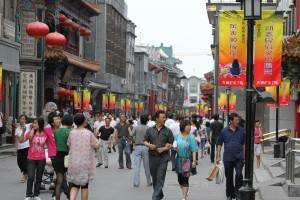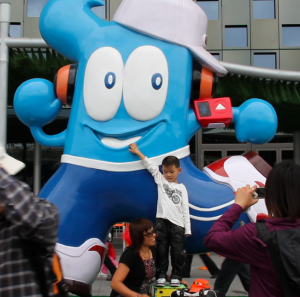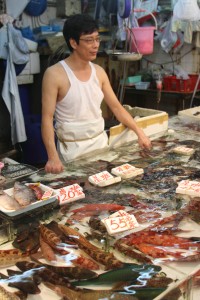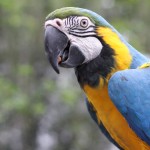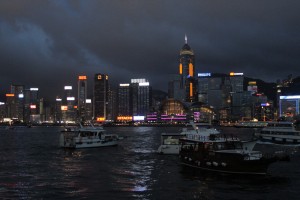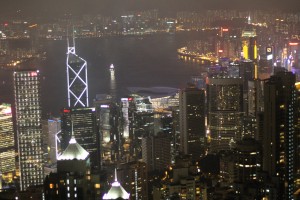The Beauty of a Language
1Note: Due to limitations of our blog I can not display Chinese characters. I have placed a graphic at the end of the post to which you can refer to for the characters. Example: “A” in the post would be “A” in the graphic below. Thanks!
When you think of a beautiful language, French or Italian comes to mind. Flowing words, rolling r’s, and wonderful pronunciation all combine into a ocean of words. On the opposite side of the spectrum is Chinese. Crazy pictures, impossible sounds, and ridiculous combinations astound the mind into thinking quite the contrary of a language of love. Or is it?
The Chinese language is made up of more than 40,000 individual characters. A character is simply a single picture with a given meaning behind it. According to the Chinese government, an educated adult will know between 6,000 and 7,000 characters in his or her lifetime. Knowledge of 3,000 characters is generally required to read a Chinese newspaper.
During the cultural revolution of China in the 1950s, the government realized the need to simplify the language forgoing the traditional complex characters and settling on Mandarin in a simplified form. This is the language you will see and hear today.
In general when you see a character it has one single meaning. For example the character “A”(hao) means good. If you study the character closely enough you can see the outline of a women on the left side and a man on the right. When a man a women are together things are always good. Thus “A”means good individually. If we place a “B” (ni), meaning “you,” next to it and create “BA”(ni hao) we would be saying hello. By combining individual characters together words and phrases can be formed. Literally translated “BA” (ni hao) would mean “You Good,” but in Chinese it means “hello.” Simple enough? It gets better!
It is next to impossible to memorize each and every character. Fear not! The language is comprised of little over 200 radicals. Radicals are simple elements of each character that generally mean something. If we look at the word “C” (re) or hot, we can see the fire radical contained in it, or the four lines on the bottom of the character. Picture a fire lit beneath the character. You would now know that anytime you see the fire radial on a different word that it will mean something similar.
Finally, lets look at the character “D”(ren) or people. You can easily tell how the character looks very similar to a person. In fact the 2010 World Expo used this character in creating the mascot Haibao. The spoken word itself actually means treasure of the sea. If you can learn these simple meanings behind the characters your Chinese learning will be leaps ahead.
The most fascinating aspect of the language is the tones. You can say the exact same thing, but with different tones allowing you to create four different words. By simply inflecting your voice sharper, softer, null, or sharp then soft, you can create such tones. Let’s again use the word hao as an example. “A”(hao) means good and is low falling and high rising. “E”(hào) means very grand water. “F”(háo) means roar or cry. Finally you might have a just a neutral hao meaning something completely different.
During my first attempts to speak the language I was extremely careful to try to pronounce everything clear and slow. It didn’t work. Ironically however when I mumble through words at a lower voice level the translation comes across with success. It seems most natives speak this way, and yet it is all understandable.
At first, I thought that using pictures as a language would be extremely primitive. In a way it is, but it has developed over thousands of years into a beautiful art. Communication at the highest level accords here. Schools here teach choreography classes using ink and brush. In English every word has a meaning. In Chinese every character has a story.
Up in the Clouds
3Pixar’s “Up” came true for our group last night as the seven of us truly were among the clouds.
Our adventure started at 4 o’clock in our hotel lobby where we meet up with Thomas from Hong Kong Baptist University. Hopping on the MTR (the local subway system) we quickly dashed away into the Hong Kong underground. We emerged at a stop shortly down the line where Thomas lead us inside the strange world called a wet mart.
The closet thing I can think to describing this self perpetuating marketplace is a bustling train station. Fresh fish swim in open tanks while their counterparts lay on ice waiting for a buyer to fry up at home. Vendors sell every type of fruit imaginable while farmers uncage chickens for a paying customer. Thomas tells us this is their version of a local Wal-Mart, that residents in Hong Kong venture to one of the thousand of these markets scattered across the city every night to get food for the next day. While this market feeds the appetite of Hong Kong other locations fuel the culture.
Our next stop on the “tour” took us to the famous flower and bird streets of Hong Kong. In this wild market, birds of all types can be found. When a man emerges into retirement he typically purchases a bird of his liking. All over you can see these gentlemen walking around, playing checkers, and conversing, all with their birds in tiny cages. Right across the street is the Hong Kong flower market where flowers of all shapes and origins are put on the market. The Peak was just one more MTR ride away, or so we thought.
We emerged at an MTR near the harbor on the opposite side. Walking to the river front produced some spectacular views of the entire harbor. If you’ve ever seen a picture of Hong Kong, it was likely taken from this spot. Looking across the harbor it’s possible to see just about every name brand in
the corporate world. Each building lights up in their own light show in its bid to attract attention. At 8 PM the show starts. Titled, A Symphony of Lights, more than 44 buildings emit a synchronized laser light show illuminating the harbor and surrounding area. Truly a spectacle to witness should you ever land in Hong Kong. We soon found ourselves on a ferry going across the harbor to opposite side.
Debarking from the ferry though Victoria Harbor we landed in a high fashion shopping district. Overlooking the harbor, Victoria Peak emerges out of the land on Hong Kong Island giving breathtaking views from the summit. Winding roads and staircases make their way to the top viewing point creating a long hike up a 27% incline. Thankfully we took the tram.
Arriving in yet another shopping center we ascended 10 escalators finally emerging on the viewing platform of the the
peak. Walking outside we were immediately inundated by clouds surrounding our bodies. Glancing up at a light post we witnessed just how fast the visible mass of water droplets were moving across the summit of the peak. Slowing walking to the edge of the platform the reason to come to the top soon became apparent. A city unlike any other in the world appeared. Still lit up it was here where we could see the entire harbor. Boats of all shapes and sizes moved back and forth in the water transporting people, imports and exports. Viewable was the Two International Finance Centre, the tallest building in Hong Kong, stood out to me as the building from the new Batman film, The Dark Knight.
Going back down the tram felt a little weird, I think we all wanted to stay up in the clouds a little bit longer.
